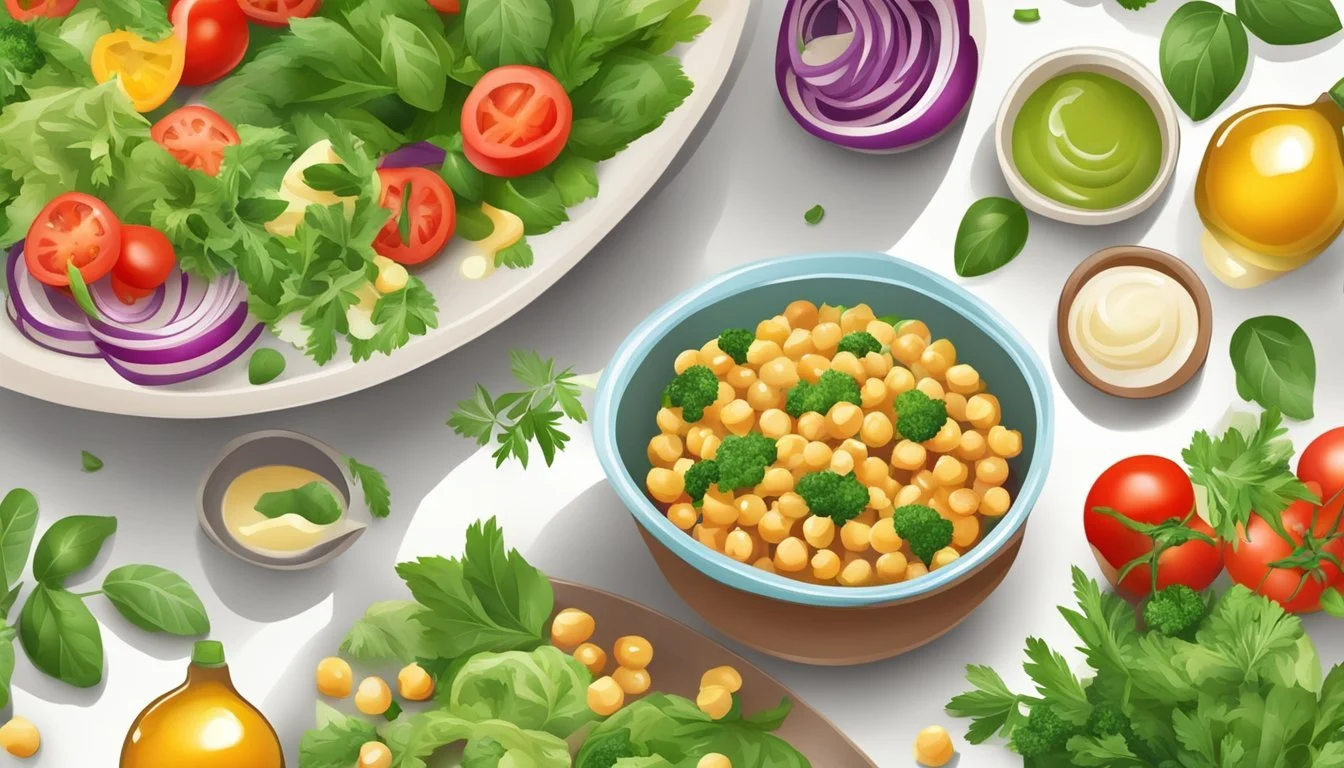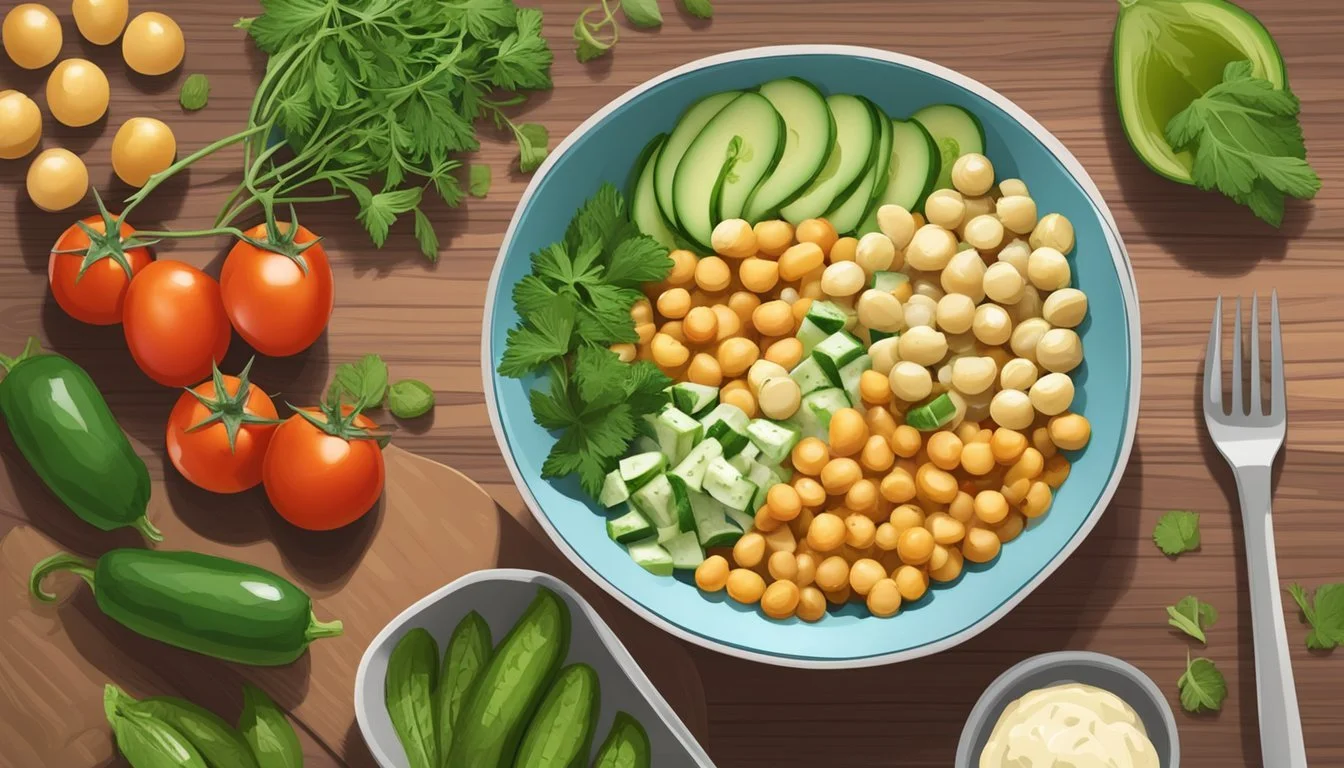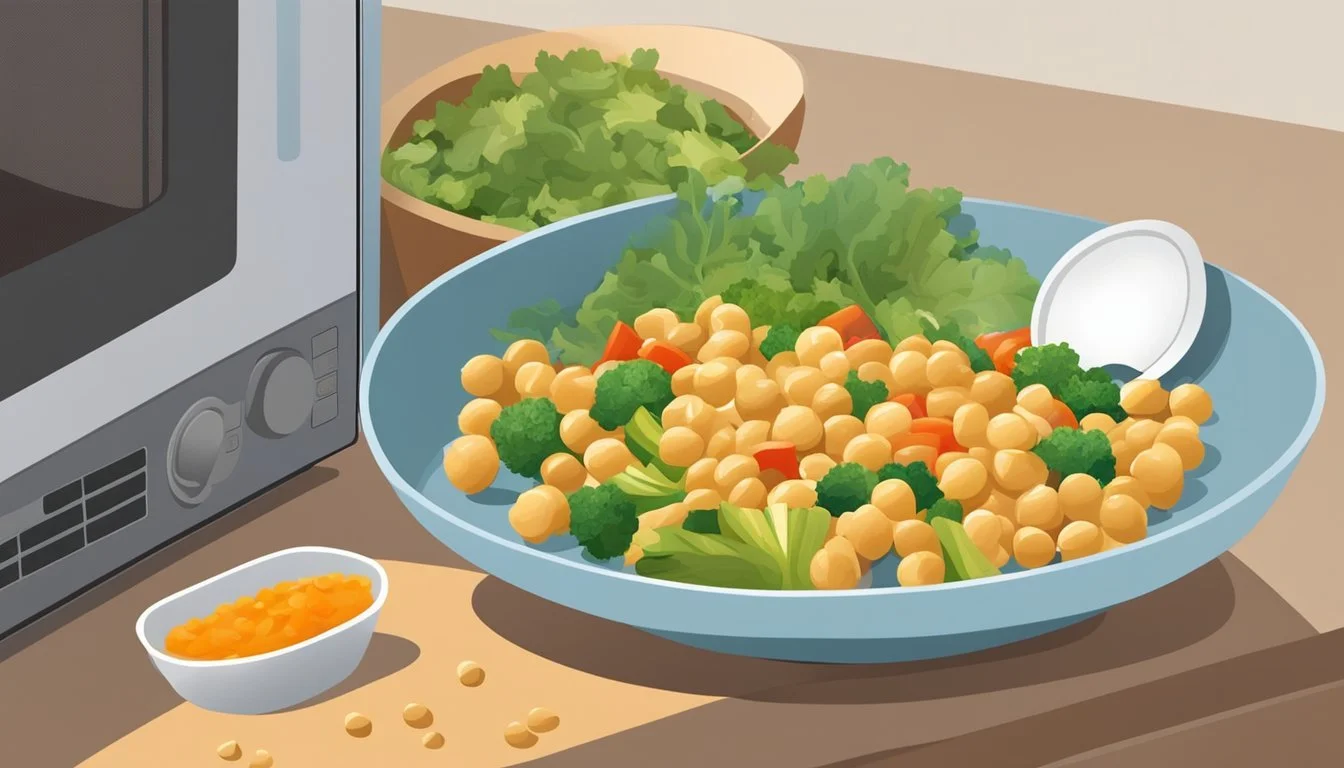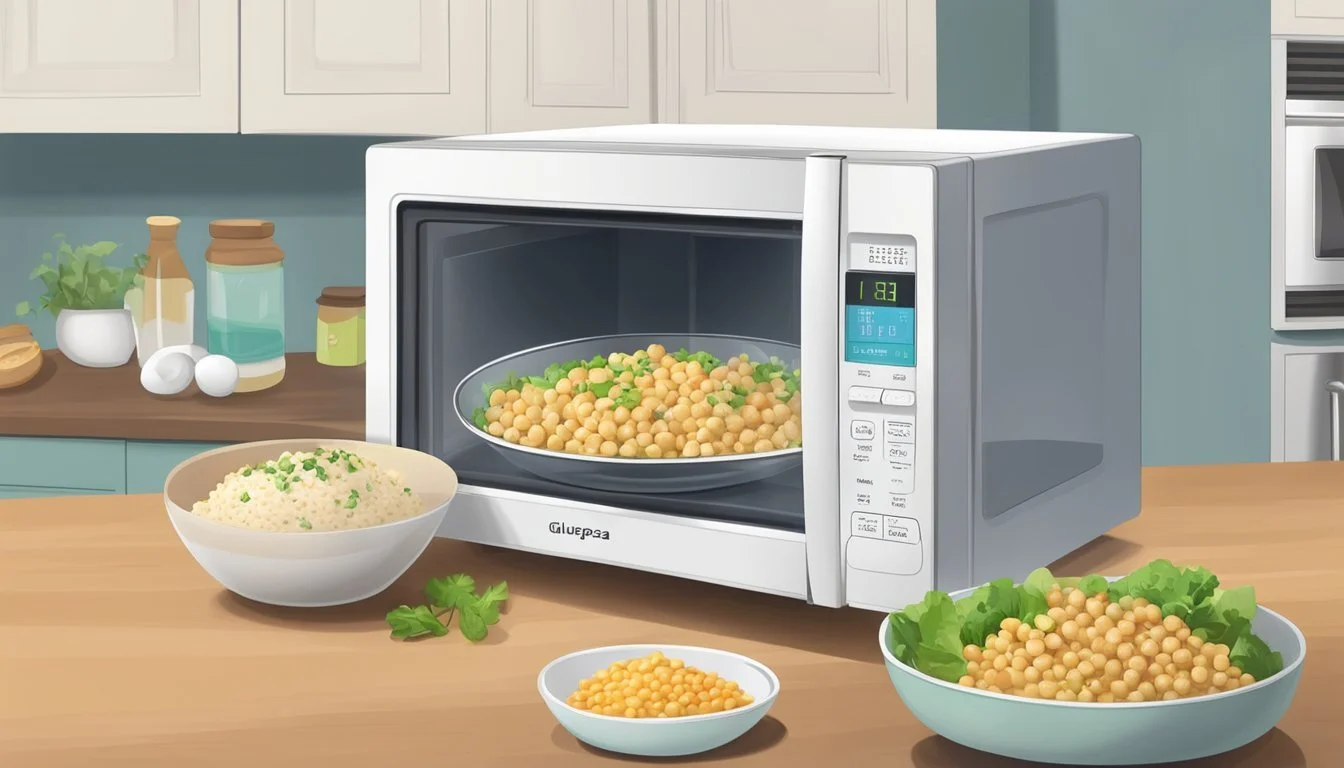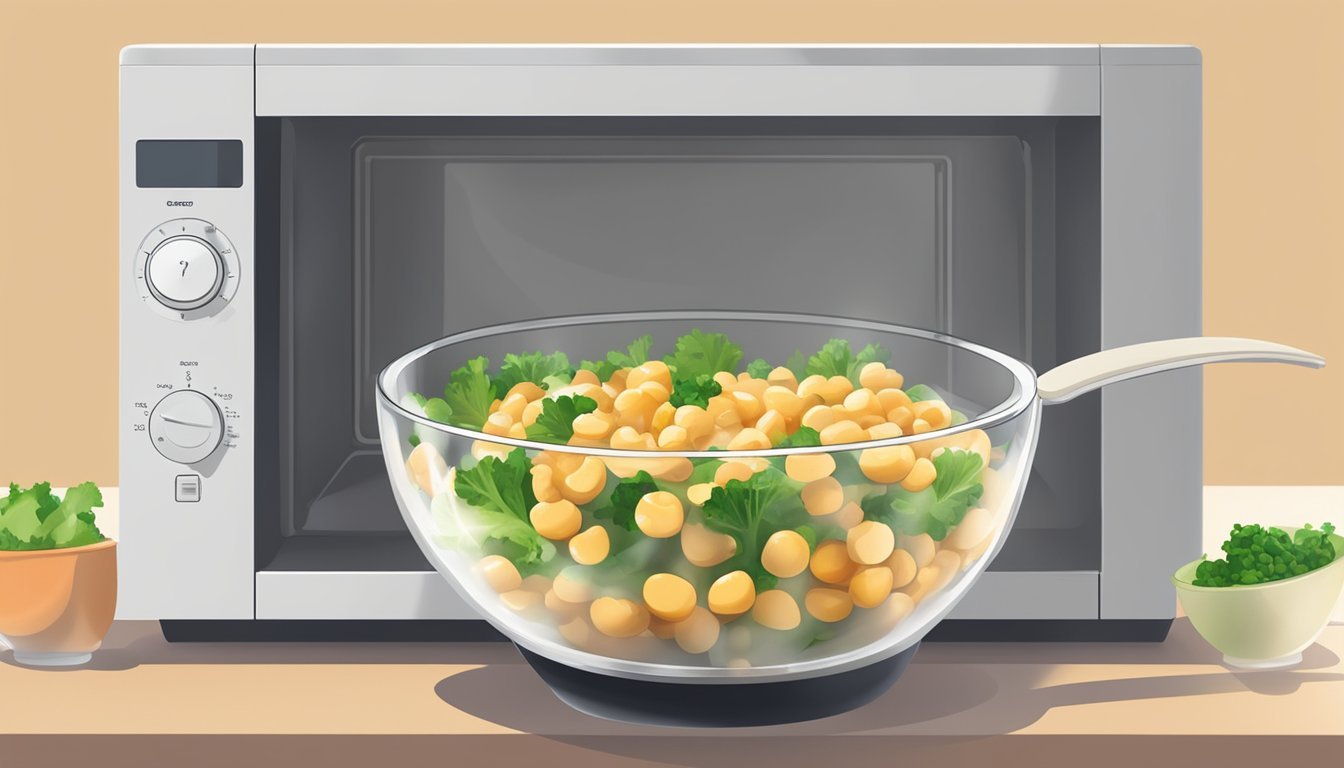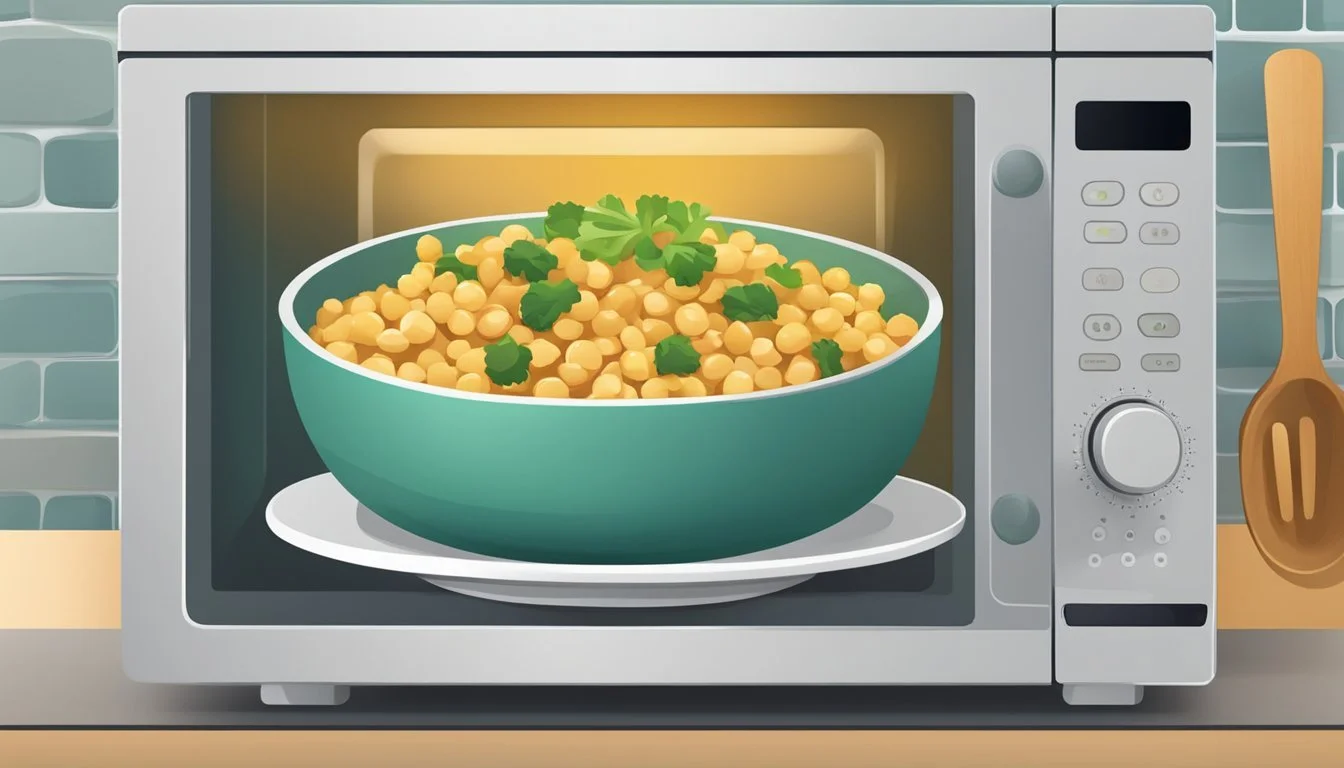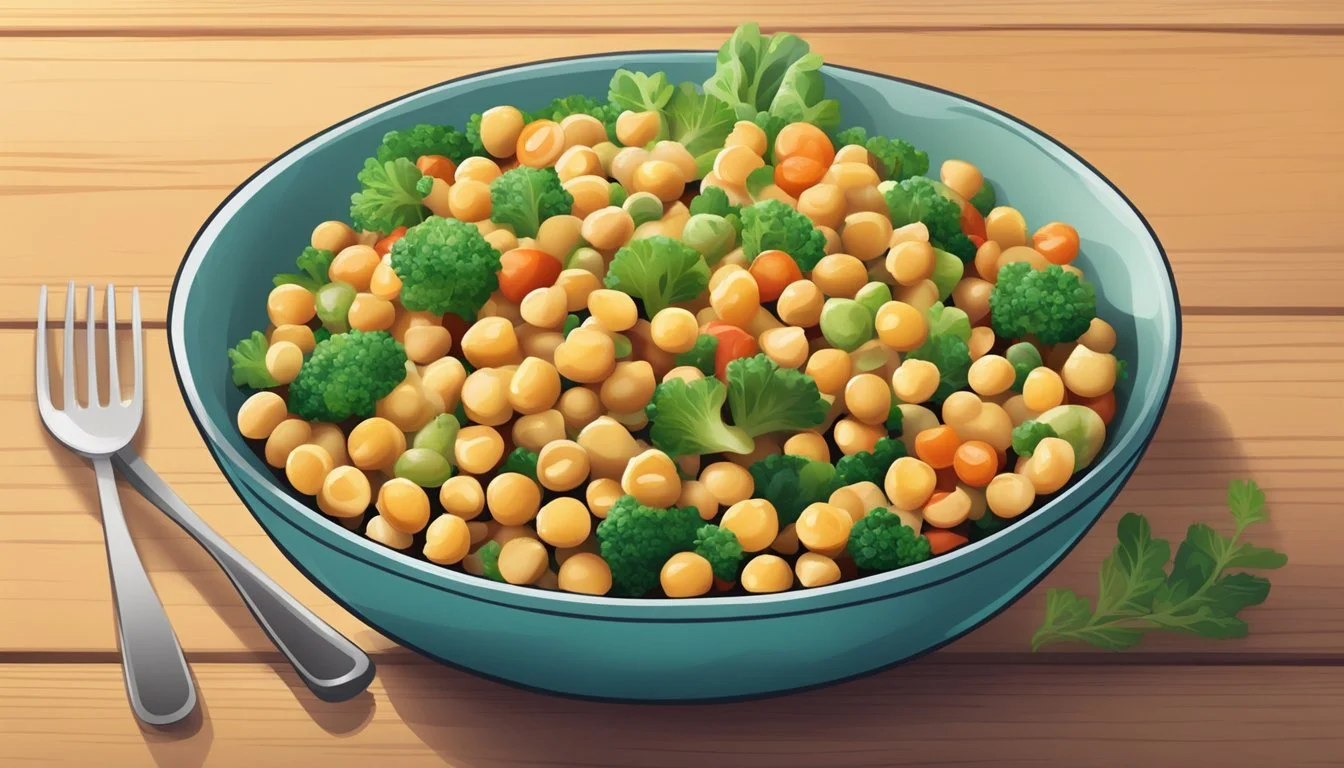How to Reheat Gluten-Free Chickpea Salad for Best Flavor and Texture
Reheating a gluten-free chickpea salad might seem daunting, especially if you want to retain its nutritional value and taste. Chickpeas, known for their high protein content, combine seamlessly with various ingredients to create a hearty and healthy dish that's perfect for those adhering to gluten-free, vegan, or vegetarian diets.
The best way to reheat gluten-free chickpea salad is gently warming it in a skillet over low heat. This method helps preserve the texture and flavors of the ingredients like avocado, roasted red pepper, and quinoa, which are often found in chickpea salads. A quick and careful reheat ensures your meal remains delicious and nutritious without compromising its integrity.
An important tip for maintaining freshness is storing your salad correctly in an airtight container, which will keep it safe in the fridge for up to five days. Whether the recipe calls for warm or cold serving, mastering reheating techniques ensures each bite maintains the salad's original charm.
Benefits of Gluten-Free Chickpea Salad
Chickpea salad provides valuable nutrients while remaining appropriate for various dietary needs. It is highly nutritious and versatile, catering to those who need gluten-free, vegetarian, or vegan options.
Nutritional Overview
Chickpea salad is packed with essential nutrients. Chickpeas are high in fiber, promoting digestive health and satiety. They are also a good source of plant-based protein, which supports muscle repair and growth.
A typical serving offers a balanced mix of carbohydrates, fiber, and healthy fats. Ingredients like bell peppers, tomatoes, and cucumbers add vitamins and minerals, enhancing the salad’s overall nutritious profile. This blend makes chickpea salad an excellent choice for a healthy, balanced diet.
Suitability for Dietary Restrictions
This salad is naturally gluten-free, making it safe for those with celiac disease or gluten intolerance. Additionally, it suits vegetarian and vegan dietary preferences due to the absence of animal products.
The use of plant-based protein like chickpeas makes it an attractive option for those avoiding meat. The recipes can easily be adapted to be nut-free, oil-free, and low-calorie, further supporting diverse dietary restrictions while retaining its healthy status.
Ingredients & Variations
When preparing a gluten-free chickpea salad, using fresh ingredients is crucial. Explore a variety of additions to customize the salad to your liking.
Essential Ingredients
Chickpeas are the heart of this salad. Use canned chickpeas for convenience, ensuring they are rinsed and drained well.
Include fresh veggies such as cucumber, tomato, red onion, and bell pepper. Cherry or grape tomatoes offer a burst of sweetness and vibrant color.
Fresh herbs like parsley, dill, and cilantro add depth and flavor. Lemon juice and olive oil form the base of a simple dressing, enhancing the salad's brightness.
Avocado brings creaminess, balancing the textures of the dish.
Optional Additions
Add olives for a Mediterranean touch, introducing a salty, briny flavor.
For a twist, include feta cheese or halloumi to boost the richness. Both cheeses complement the fresh veggies and herbs remarkably well.
Incorporate more colorful vegetables like red bell pepper or carrots for added crunch and visual appeal.
Garlic can be minced and added to the dressing for an extra layer of flavor, while cucumber adds a cooling effect.
Dressing Recipes
A basic dressing can be made with lemon juice, olive oil, salt, and pepper. This keeps the dish light and allows the fresh ingredients to shine.
For a creamier variation, whisk together olive oil, lemon juice, and tahini.
Add minced garlic, dill, and a touch of honey for a nuanced flavor profile. This dressing pairs well with the salad, enhancing its Mediterranean flair.
Another option is a vinaigrette made from red wine vinegar, olive oil, Dijon mustard, and fresh herbs like parsley and cilantro, perfect for those who prefer a tangy twist.
Preparation of Chickpea Salad
The preparation of chickpea salad involves cooking the chickpeas, combining a variety of fresh vegetables, and adding a well-balanced seasoning for a delightful flavor.
Cooking the Chickpeas
Start with either canned or dried chickpeas. Canned chickpeas are convenient and require less preparation, but fresh ones can offer a better texture.
For dried chickpeas, soak them overnight in cold water with a pinch of baking soda. The next day, drain, rinse, and simmer in fresh water until tender.
Alternatively, use a pressure cooker for faster results. Always drain and rinse chickpeas thoroughly before using, regardless of whether they are canned or freshly cooked.
Combining the Vegetables
A chickpea salad typically includes fresh and crunchy vegetables. Common choices are cucumber, tomatoes, red onion, and bell pepper.
For extra flavor and texture, add avocado, sugar snap peas, and radishes.
Chop all vegetables into uniform, bite-sized pieces to ensure even mixing and a pleasant eating experience. Combine all chopped vegetables in a large bowl with the cooked chickpeas.
Seasoning and Flavors
A finely tuned seasoning is essential for a chickpea salad. Fresh lemon juice and extra virgin olive oil form the base of the dressing.
To this, add Dijon mustard for tanginess and minced garlic for depth. Maple syrup or honey can be added for a hint of sweetness.
Season with kosher salt and black pepper to taste. Whisk the dressing ingredients together until emulsified, then toss with the salad. Fresh herbs like parsley or cilantro can be included for an aromatic finish.
By following these steps, you will have a delicious, gluten-free chickpea salad ready to enjoy.
Reheating Methods
To keep your gluten-free chickpea salad as flavorful as possible, choosing the right reheating method is essential. The microwave, oven, and stovetop each offer different benefits for preserving textures and flavors.
Microwave Reheating
Using a microwave to reheat chickpea salad is quick and convenient. Place the salad in a microwave-safe bowl. Sprinkle a few drops of water or vegetable broth over the salad to maintain moisture and cover it with a microwave-safe lid or plate.
Heat on medium power for 1-2 minutes. Stir halfway to ensure even heating. If needed, continue heating in 10-second increments until warmed to your preference. Make sure not to overcook as the chickpeas can become mushy, losing their firm texture.
Oven Reheating
The oven method is ideal for those who prefer a more evenly heated salad. Preheat your oven to 350°F (175°C). Transfer the chickpea salad to a baking dish and add a splash of water or vegetable broth to keep it from drying out.
Cover the dish with aluminum foil to retain moisture. Heat for 10-15 minutes or until warmed through. Be sure to check the salad periodically to avoid over-drying. The oven’s gentle heat helps maintain the chickpeas' texture, preserving the bite and flavor.
Stovetop Reheating
Reheating on the stovetop offers more control over the process. Place the chickpea salad in a non-stick or heavy-bottomed pan. Add a small amount of water or vegetable broth to prevent sticking and drying out.
Set the stove to medium heat. Stir frequently to ensure even warming. This method typically takes around 5-6 minutes. The stovetop is especially good for maintaining the salad’s integrity, keeping the chickpeas and any added vegetables from becoming too soft.
Serving Suggestions
When considering how to best serve gluten-free chickpea salad, it's helpful to think about complementary proteins, light lunch options, and suitable dinner pairings. These ideas can help elevate your chickpea salad into a satisfying and refreshing meal.
Pairings with Proteins
Gluten-free chickpea salad pairs wonderfully with a range of proteins. Grilled chicken offers a lean and flavorful option that balances well with the salad's refreshing nature.
Tofu or tempeh are excellent plant-based choices, especially when marinated and grilled. For seafood lovers, grilled shrimp or salmon can add a rich, savory element. Each of these proteins makes the salad a complete and filling meal.
Light Lunch Ideas
For a light lunch, chickpea salad can be enjoyed on its own or with a few simple additions. Serving it over a bed of mixed greens adds extra crunch and nutrients.
Consider adding some sliced avocado for creaminess and healthy fats. Alternatively, using the salad as a filling in a gluten-free wrap can turn it into a convenient, portable lunch option. Minimal prep work and maximum taste make these ideas ideal for quick and satisfying midday meals.
Dinner Combinations
Chickpea salad can become a hearty dinner when paired appropriately. Serving it alongside grilled lamb or steak creates a well-rounded and robust meal.
For a vegetarian option, consider adding roasted vegetables like bell peppers or zucchini to the plate.
Quinoa or wild rice can also accompany the salad, providing additional texture and making the meal more substantial. These combinations ensure that the chickpea salad is versatile enough to complement a variety of dinner settings.
Storage Tips
Proper storage of gluten-free chickpea salad ensures it maintains its flavor, texture, and nutritional benefits when served later. Consider these methods for both short-term and long-term storage, and avoid common issues such as sogginess.
Short-Term Storage
For short-term storage, typically up to 3-4 days, place the salad in the refrigerator. Use an airtight container to prevent the absorption of other odors and flavors. This also helps maintain the salad's moisture.
Label the container with the contents and date to keep track of freshness. Store the container towards the back of the refrigerator where the temperature is most consistent.
Stir gently before serving to redistribute any settling that may have occurred. Short-term storing ensures the salad remains delicious without significant loss of quality or nutrients like fiber and healthy fats.
Long-Term Storage
Gluten-free chickpea salad isn't ideal for freezing due to its fresh vegetables. However, if freezing is necessary, consider freezing only the chickpeas and mixing with fresh veggies later.
To freeze, drain and rinse the chickpeas well, then store in a freezer-safe, airtight container. When ready to serve, defrost in the refrigerator, then combine with freshly chopped vegetables and dressing.
Never refreeze thawed chickpea salad as it can cause nutrient degradation and undesirable texture changes. By carefully selecting what components to freeze, you preserve both flavor and health benefits like low calories and balanced carbohydrates.
Avoiding Sogginess
Sogginess can be a major issue with chilled salads. To avoid this, keep dressing separate until just before serving. This prevents the vegetables from absorbing too much moisture.
For an existing salad, pat dry chopped vegetables before adding them to the mix. Incorporate ingredients with less water content, such as carrots or bell peppers, to balance moisture levels.
Store in multiple layers with paper towels between layers of salad. This helps absorb excess moisture, maintaining a fresh, crisp texture. Avoiding sogginess ensures that each bite of your salad retains its intended crunch and flavor profile.
Health Considerations
When reheating gluten-free chickpea salad, there are key health considerations to take into account. These focus on potential allergic reactions and ensuring a proper balance of macronutrients.
Allergy Information
Chickpea salad is naturally gluten-free, making it suitable for those with gluten intolerance or celiac disease.
Ingredients like bell peppers, tomatoes, and celery are typically safe for most people but consider common allergens like nuts, which may be added to some recipes.
Chickpeas themselves are a legume and can trigger allergies in some individuals who are sensitive to legumes. Another consideration is the use of dressings that may contain mustard or soy-based products, as these are also common allergens.
Keeping the ingredient list simple and clear can help avoid unwanted allergic reactions. Store-bought dressings should be checked for any hidden gluten or allergens.
Balancing Macronutrients
Protein, carbs, and fats must be well-balanced to maximize the nutritional benefits of a chickpea salad. Chickpeas provide a significant amount of protein, which is essential for muscle repair and growth.
Healthy fats from olive oil or tahini used in dressings can benefit heart health.
It’s important to monitor the calories and sodium content, especially if pre-packaged ingredients are used.
Adding vegetables like cucumbers and tomatoes not only enhances the taste but also adds vitamin C, potassium, and other essential nutrients.
Inclusion of calcium-rich ingredients like feta cheese or a fortified alternative can also be beneficial. Ensure each serving contains an adequate amount of fiber to aid digestion.
These considerations can make a reheated gluten-free chickpea salad both nutritious and delicious.
Recipe Variations for Dietary Needs
For those catering to specific dietary needs, there are delicious ways to adapt a gluten-free chickpea salad. High-protein components and low-carb substitutes can enhance the nutritional profile and accommodate different preferences.
High-Protein Options
Quinoa and tofu are excellent additions for increasing protein content. Quinoa, a complete protein, complements chickpeas with essential amino acids. Cook quinoa and mix it into the salad for a nutty flavor and texture.
Tofu can be marinated in spices and then baked or pan-fried. Cubed tofu adds a hearty texture and boosts protein levels.
Another option is to incorporate spinach. Although spinach isn't high in protein by itself, it complements high-protein ingredients and provides extra nutrients. Mixing it with a tahini or hummus dressing can both elevate taste and protein content.
Low-Carb Alternatives
For a low-carb twist, substitute chickpeas with zucchini noodles or cauliflower rice. Zucchini noodles provide a fresh, crunchy texture and pair well with various dressings and toppings.
Cauliflower rice is another versatile option. It can be pre-cooked or raw, keeping the salad light.
For added flavor, consider topping the salad with avocado slices or nuts. Avocado introduces healthy fats while maintaining the salad’s creamy texture.
Remember to use a dairy-free dressing like a lemon-tahini mix to keep the dish cohesive and aligned with dietary preferences.
Each variation offers unique benefits and flavors, making it easy to tailor the chickpea salad to various eating plans.
Final Thoughts
Reheating gluten-free chickpea salad retains its vibrant flavors and satisfying textures with simple steps. Whether vegan or with additional ingredients like halloumi, this salad stays refreshing and healthy.
To maintain its bright taste, avoid overheating. A gentle warm-up in a skillet over low heat keeps the spices and veggies fresh.
It's customizable, making it possible to keep it vegan or add elements like avocado or quinoa.
Store in the fridge for up to three days, ensuring it remains a flavorful, gluten-free option. By following these tips, your chickpea salad remains a delightful meal anytime.


